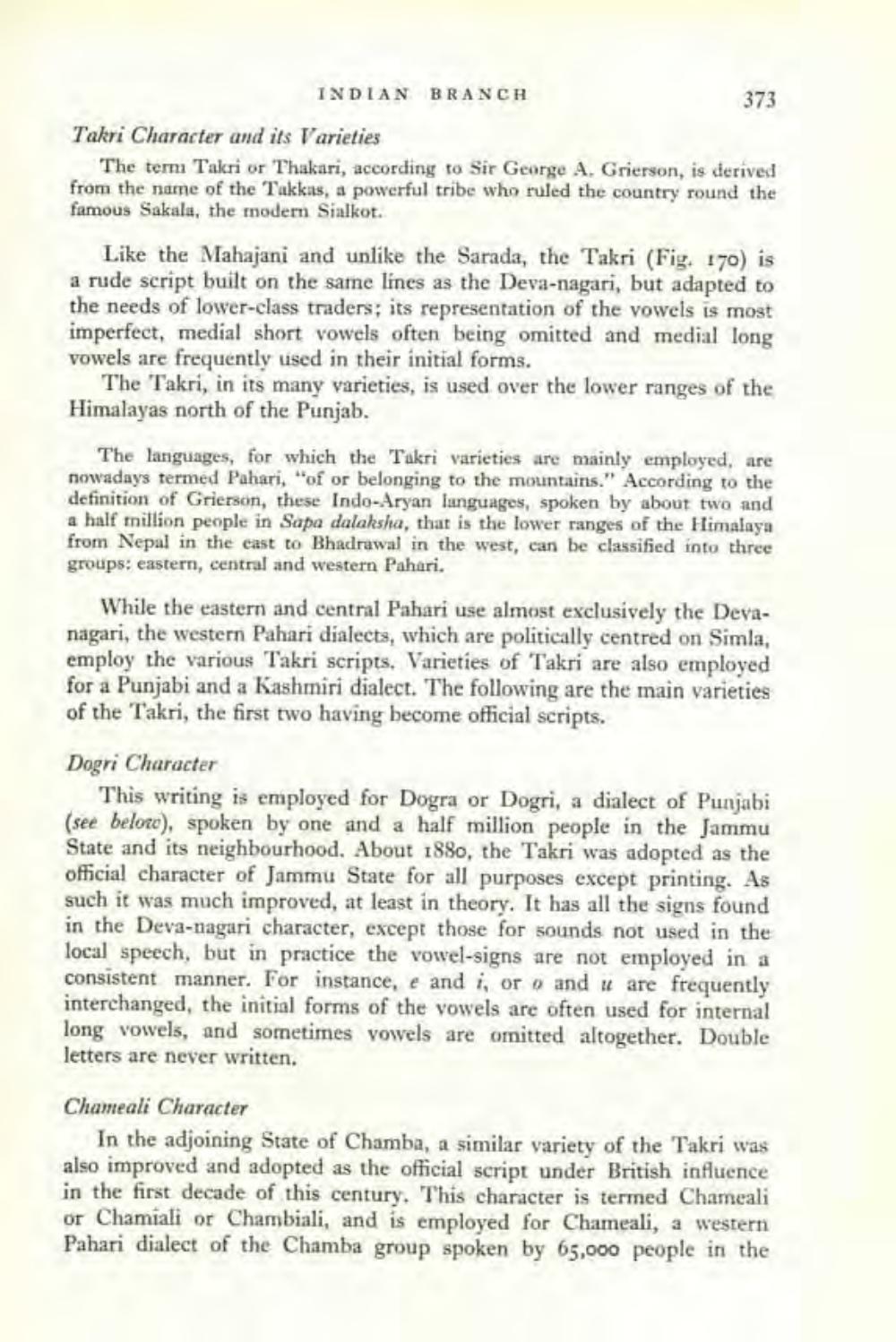________________
INDIAN BRANCH
373
Takri Character and its Varieties
The term Takri or Thakari, according to Sir George A. Grierson, is derived from the name of the Takkas, a powerful tribe who ruled the country round the famous Sakala, the modem Sialkot.
Like the Mahajani and unlike the Sarada, the Takri (Fig. 170) is a rude script built on the same lines as the Deva-nagari, but adapted to the needs of lower-class traders; its representation of the vowels is most imperfect, medial short vowels often being omitted and medial long vowels are frequently used in their initial forms.
The Takri, in its many varieties, is used over the lower ranges of the Himalayas north of the Punjab.
The languages, for which the Takri varieties are mainly employed, are nowadays termed Pahari, "of or belonging to the mountains. According to the definition of Grierson, these Indo-Aryan languages, spoken by about two and a half million people in Sapa dalaksha, that is the lower ranges of the Himalaya from Nepal in the cast to Bhadrawal in the west, can be classified into three groups: eastern, central and western Pahari.
While the eastern and central Pahari use almost exclusively the Devanagari, the western Pahari dialects, which are politically centred on Simla, employ the various Takri scripts. Varieties of Takri are also employed for a Punjabi and a Kashmiri dialect. The following are the main varieties of the Takri, the first two having become official scripts.
Dogri Character
This writing is employed for Dogra or Dogri, a dialect of Punjabi (see beloze), spoken by one and a half million people in the Jammu State and its neighbourhood. About 1880, the Takri was adopted as the official character of Jammu State for all purposes except printing. As such it was much improved, at least in theory. It has all the signs found in the Deva-nagari character, except those for sounds not used in the local speech, but in practice the vowel-signs are not employed in a consistent manner. For instance, e and i, or o and u are frequently interchanged, the initial forms of the vowels are often used for internal long vowels, and sometimes vowels are omitted altogether. Double letters are never written.
Chameali Character
In the adjoining State of Chamba, a similar variety of the Takri was also improved and adopted as the official script under British influence in the first decade of this century. This character is termed Chameali or Chamiali or Chambiali, and is employed for Chameali, a western Pahari dialect of the Chamba group spoken by 65,000 people in the




